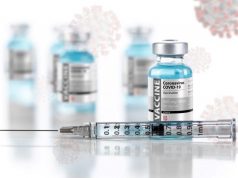Use of this diagnostic strategy results in reduction in use of chest imaging
TUESDAY, Dec. 3, 2019 (HealthDay News) — Low clinical pretest probability (C-PTP) and a ᴅ-dimer of less than 1,000 ng/mL identify patients with a low risk for pulmonary embolism, according to a study published in the Nov. 28 issue of the New England Journal of Medicine.
Clive Kearon, Ph.D., from McMaster University in Hamilton, Ontario, Canada, and colleagues performed a prospective study in which pulmonary embolism was considered to be ruled out without further testing in outpatients with low C-PTP and ᴅ-dimer <1,000 ng/mL or with moderate C-PTP and ᴅ-dimer <500 ng/mL. All other patients underwent chest imaging. A total of 2,017 patients were enrolled, 7.4 percent of whom had pulmonary embolism on initial diagnostic testing.
The researchers found that none of the 1,325 patients with low or moderate C-PTP (1,285 and 40 patients, respectively) had venous thromboembolism during three-month follow-up. These patients included 315 with low C-PTP and a ᴅ-dimer level of 500 to 999 ng/mL. Venous thromboembolism occurred in one of the 1,863 patients who did not receive a diagnosis of pulmonary embolism initially and did not receive anticoagulant therapy. The strategy used resulted in use of chest imaging in 34.3 percent of patients compared with 51.9 percent with a diagnostic strategy in which pulmonary embolism is ruled out with low C-PTP and a ᴅ-dimer level of <500 ng/ml.
“This way of using ᴅ-dimer testing and clinical assessment reduced the need for computed tomography scanning by one-third,” Kearon said in a statement.
Abstract/Full Text (subscription or payment may be required)
Copyright © 2019 HealthDay. All rights reserved.








